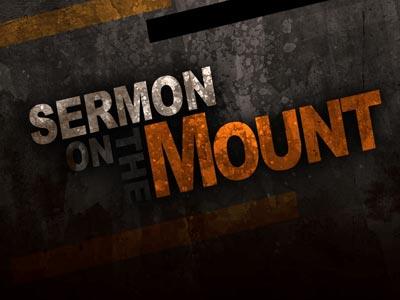-
A Big Picture Perspective Series
Contributed by Chip Monck on Nov 28, 2017 (message contributor)
Summary: This series explores the Sermon on the Mount. With this introductory message, we examine the overall themes and structure of this dynamic teaching from Christ. Extensive inspiration for this series derived from D. Martin Lloyd-Jones "Studies on the Ser
(Recite Matthew 5:1 & 2). And with those words we are launched into one of the most famous, worldwide known sermons of all time.
Let’s see how well we know the Sermon on the Mount. A little Sermon on the Mount Trivia. (Give trivia quiz)
Well today we want to establish a big picture perspective of this sermon. Rather than breaking down one verse, or ten words and trying to figure out what they mean for me all by themselves, it’s good to look at the sermon overall, and get a feel for where Jesus was taking His audience.
And an important note to make at this point, and remind ourselves of over the next 12 to 18 to 24 months is that the purpose of any Scripture. Whether it is the Sermon on the Mount, the Gospels, the New Testament, or the entire Bible overall. The purpose of Scripture is not for us to draw out all kinds of perfect schemes and classifications. Scripture does not exist for us to simply analyze, objectify and study. It is here for us to read for the purpose of applying and living out what we discover in our journey.
Analyzing Scripture is an okay thing to do, as long as it is always subordinate in position to the application of Scripture to our daily life. So we are going to dive deep. And there will be times when we may seem to get pretty technical or theological. But it is all for the purpose of maturing in our walk with Christ. We are pulling out a steak knife, so that we can move from the milk to the meat and potatoes of being a Christ follower.
So let’s try and breakdown this sermon, and get a feel for where Jesus was going. As with any book of the Bible or passage of Scripture, there are numerous ways to classify the content and draw the outline boundaries. If I had 15 study Bibles up here with me this morning providing outlines of Matthew 5 through 7, there would probably be different segment breakdowns in all 15. There are many ways to subdivide Scripture.
I’m simply going to provide one. One that I think gives us a good frame of reference to operate and grow from. And this frame of reference or paradigm begins with a very general perspective that then moves to a much more particular one.
The general perspective is given to us in Matthew 5, verses 3 through 16. Some very broad statements in regards to living the Christian life. Then the rest of the sermon, Matthew 5:17 through 7:27 moves us to the particulars. Specific life and conduct teaching. First a very general view and then illustrations of what that general view looks like in day-to-day specific situations.
But we can even break the general perspective down a little more than that. In Matthew 5:3 through 10, we are given a description of the character of a Christian. More or less, the Beatitudes are a word picture, painting for us what a Christian looks like. (read 5:3 through 10).
Now some might look at the start of verse 11 and say, “Wait a minute. You missed one. There is one more beatitude.” But I think that more than just one more beatitude, what we have starting in verse 11 is the proof in the pudding. We have been told what a Christian looks like. Now we are shown the world’s reaction to that. (read verse 11 through 12).
If you live out the beatitudes. If your life looks like this general picture of what a Christian looks like. If you model these things like the prophets did. Then you are going to be blessed to see the world’s reaction to you. Because guess what? If we are living the Christian life the way Jesus pictures it, things shouldn’t be all roses and daisies for us in this world.
So we are told what kind of person we are to be, in a general sense, and then told what will happen to us for being that kind of person, in a general sense. And then Jesus does the next logical thing. If He is going to tell us what kind of life we are to live, and if He is going to tell us how the world will respond to that. Then He needs to tell us how the two go together. (read verse 13 through 16)
You still with me? Jesus has seen this massive crowd. He has climbed up on this mountain where He has this perspective to overlook the masses. His disciples have drawn in close to Him, and He begins to teach them. Beginning with this general description of what it looks like to be a Christ follower, how the world will respond to that, and how we relate to others in such a contrasting lifestyle. A general perspective for the Christian.

 Sermon Central
Sermon Central



